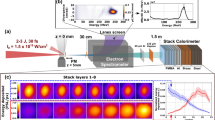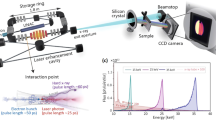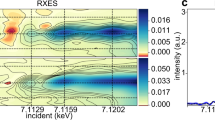Abstract
THE development of the theory of atomic constitution has made measurements of the intensity of lines in X-ray spectra very important. Estimates of relative intensities of X-ray lines have hitherto been attempted by means either of the ionisation chamber or the photographic plate. Owing, however, to the lack of precise knowledge of the relative sensitiveness of these methods for different wave-lengths, the comparison of intensities of lines which differ in wave-length has involved a considerable uncertainty. To overcome this difficulty, absolute measurements of the energy of X-ray lines based on the bolometric method have been attempted by several workers. Since the wavelengths used lie on the short wavelength side of the bromine K-absorption edge, the sensitivity curve for the photographic plate obtained in this way cannot be applied to measurements of the relative intensities of the L- and M-series of most elements. To obtain the sensitivity curve in this region, we have exposed plates to X-rays from different metals excited under conditions which can be discussed on the basis of the theory of X-ray production.
This is a preview of subscription content, access via your institution
Access options
Subscribe to this journal
Receive 51 print issues and online access
$199.00 per year
only $3.90 per issue
Buy this article
- Purchase on Springer Link
- Instant access to full article PDF
Prices may be subject to local taxes which are calculated during checkout
Similar content being viewed by others
Author information
Authors and Affiliations
Rights and permissions
About this article
Cite this article
NISHINA, Y., RAY, B. Relative Intensity of X-ray Lines. Nature 117, 120–121 (1926). https://doi.org/10.1038/117120a0
Issue Date:
DOI: https://doi.org/10.1038/117120a0
Comments
By submitting a comment you agree to abide by our Terms and Community Guidelines. If you find something abusive or that does not comply with our terms or guidelines please flag it as inappropriate.



